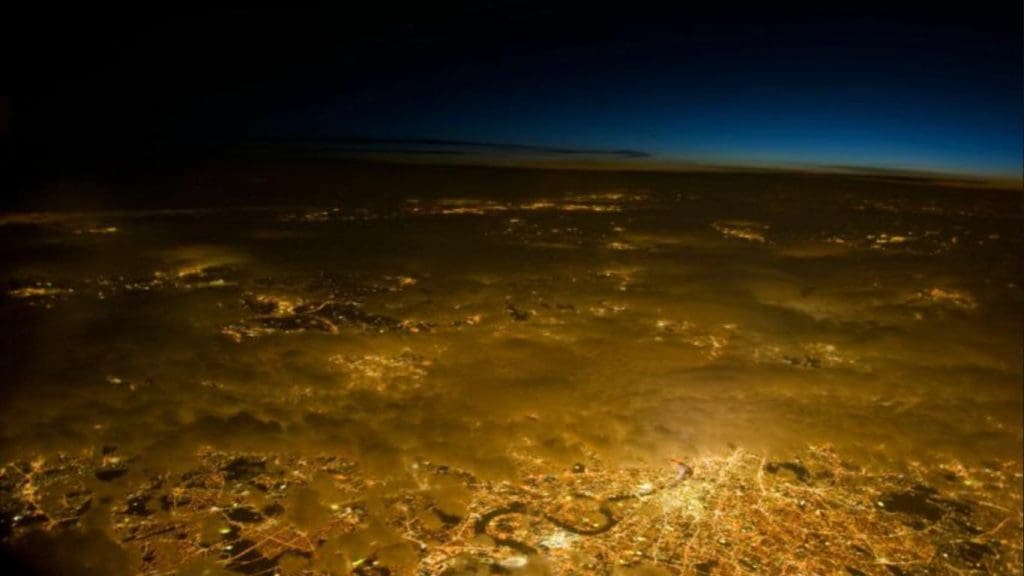Light pollution is one of the least discussed yet most pervasive environmental issues, affecting not just our ability to see the stars but also biodiversity, human health, and ecosystems. Today, I covered a landmark event on this topic, organised by the Royal Astronomical Society (RAS)—a 205-year-old institution now bringing this issue to the forefront of public policy.
The event, “Light Pollution and its Impacts”, explored policy gaps, environmental and health effects, and potential solutions, highlighting how the UK lags behind other European countries, such as France, Germany, and Croatia, in tackling light pollution. However, amid these challenges, inspiring UK initiatives are emerging, envisioning a future with less artificial light and a stronger reconnection to nature.

A political blind spot: The UK’s weak regulation on light pollution
Lord Stephen Benn, who will soon join the newly created Space Committee in the House of Lords, acknowledged that dark skies and light pollution must become key areas of discussion.
Yana Yakushina (Space Court Foundation) presented research showing that light pollution is increasing by 10% globally, yet the UK has no national legislation, monitoring, or enforcement mechanisms. Unlike France and Germany, which have legally binding targets, light pollution in the UK remains a policy afterthought.
Beyond cities: The environmental impact of light pollution
Light pollution isn’t just an urban issue—it affects rural and marine ecosystems as well. Kevin Gaston (DarkSky International, University of Exeter) and Dr Tim Smyth (Plymouth Marine Laboratory) highlighted alarming consequences of artificial light at night (ALAN):
- Disrupted zooplankton migration, affecting entire food chains.
- Bird strikes and altered feeding patterns, leading to population declines.
- Fish mortality and coral reproduction issues.
- Sea turtle hatchlings disoriented by artificial light.
On land, one-third of insects attracted to artificial light sources die, impacting pollinators like moths and disrupting ecosystems. Research even shows that urban spiders exposed to artificial light have altered brain development.
Darkness is a habitat
Dani Robertson (Prosiect Nos Partnership) emphasised that 60% of biodiversity depends on natural darkness, yet it is often overlooked as a conservation issue. Wales is leading the way, with the Welsh Government launching dark sky conservation guidance on 20th February—a model that could be replicated across the UK.
The overlooked impact on human health
We often forget how much we rely on natural light and darkness for our well-being. Christopher Barnes (University of Derby) pointed to emerging research linking artificial light exposure to mental health issues, though studies remain scarce.
Meanwhile, Robert A.E. Fosbury warned that modern LED lighting—both indoors and outdoors—is reducing our exposure to natural infrared light, with potential metabolic consequences.
A lack of connection to natural darkness also impacts our sense of place, emotion, and well-being. The Night Sky Connectedness Index (NSCI) shows that the more polluted the skies, the less people feel connected to nature—affecting happiness and mental health.
A call for action: What needs to change, and what should Londoners be calling for?
The event made it clear: we already have solutions to light pollution—what’s missing is the political will and public awareness.
1. Shift public perception: Light pollution is pollution, not just a nuisance, as highlighted by David Smith from Buglife.
Light pollution must be treated as seriously as air or water pollution. Changing the narrative is essential.
2. Improve urban planning and lighting efficiency
- Reduce unnecessary artificial lighting to save energy.
- Implement smart lighting policies.
3. Strengthen national and local policies
- The UK must introduce legally binding regulations on light pollution.
- Local authorities need clear guidance and enforcement powers to act on complaints.
- London could lead the way by embracing a London-based dark sky designation framework and adopt targets to reduce light pollution
4. Recognise the environmental and health impacts
- Biodiversity laws and frameworks must explicitly include light pollution.
- Expand dark sky protection zones, like those being introduced in Wales.
- Anna Levin, journalist and author, even suggested creating a Minister for Light and, at the very least, treating this issue as a public health concern.
5. Engage the public
Roy Alexander (Dark Skies UK) is bringing dark sky discussions to urban and disadvantaged communities. Similarly, CPRE (Campaign to Protect Rural England) is raising awareness through public engagement and education initiatives.
Looking ahead: A parliamentary report on light pollution
This event is just the beginning. Discussions will contribute to a formal report to be submitted to Parliament, potentially shaping future legislation. A Private Member’s Bill on light pollution could help open up this debate in Parliament, though its success remains uncertain.
In the meantime, there are simple steps anyone can take:
- Go stargazing—reconnect with natural darkness. Find out more on Dark Sky London to see where to go and visit one of London’s observatory
- Take part to the National Astronomy Week (1-9 Fevruary 2025)
- Reduce artificial lighting in your home and community. See the National History Museum’s tips for guidance.
- Get involved with local dark sky initiatives and campaings like the one supported by CPRE London early last year.
- Write to your MP—push for stronger regulation on light pollution.
Light pollution is one of the few environmental challenges where solutions are already within reach. The question is: Will the UK finally take action?







